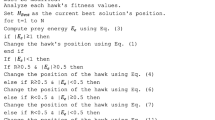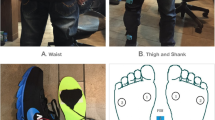Abstract
Hemiplegia is a form of paralysis that typically has the symptom of dysbasia. In current clinical rehabilitations, to measure the level of hemiplegia gaits, clinicians often conduct subject evaluations through observations, which is unreliable and inaccurate. The Microsoft Kinect sensor (MS Kinect) is a widely used, low-cost depth sensor that can be used to detect human behaviors in real time. The purpose of this study is to investigate the usage of the Kinect data for the classification and analysis of hemiplegia gait. We first acquire the gait data by using a MS Kinect and extract a set of gait features including the stride length, gait speed, left/right moving distances, and up/down moving distances. With the gait data of 60 subjects including 20 hemiplegia patients and 40 healthy subjects, we employ a random forest–based classification approach to analyze the importances of different gait features for hemiplegia classification. Thanks to the over-fitting avoidance nature of the random forest approach, we do not need to have a careful control over the percentage of patients in the training data. In our experiments, our approach obtained the averaged classification accuracy of 90.65% among all the combinations of the gait features, which substantially outperformed state-of-the-art methods. The best classification accuracy of our approach is 95.45%, which is superior than all existing methods. Additionally, our approach also correctly reveals the importance of different gait features for hemiplegia classification. Our random forest–based approach outperforms support vector machine–based method and the Bayesian-based method, and can effectively extract gait features of subjects with hemiplegia for the classification and analysis of hemiplegia.

Random Forest based Classsification and Analysis of Hemiplegia Gait using Low-cost Depth Cameras. Left: Motion capture with MS Kinect; Top-right: Random Forest Classsification based on the extracted gait features; Bottom-right: Sensitivity and specificity evaluation of the proposed classification approach.




Similar content being viewed by others
References
Pettigrew LC, Jankovic J (1985) Hemidystonia: a report of 22 patients and a review of the literature. J Neurol Neurosurg Psych 48(7):650–657
Gm D, EIu T (2007) Quantitative indices of gait in patients with psychogenic and organic dysbasia. Zhurnal Nevrol Psikh Imeni Korsakova 107(7):4
Neckel ND, Blonien N, Nichols D et al (2008) Abnormal joint torque patterns exhibited by chronic stroke subjects while walking with a prescribed physiological gait pattern. J Neuroeng Rehab 5:19
Henrik SJ, Nakayama H, Raaschou HO et al (1995) Recovery of walking function in stroke patients: the copenhagen stroke study. Arch Phys Med Rehabil 76(1):27–32
Toro B, Nester C, Farren P (2003) A review of observational gait assessment in clinical practice. Phys Theory Pract 19:137–149
Wade DT, Langton-Hewer R, Wood VA, Skilbeck CE, Ismail HM (1983) The hemiplegic arm after stroke: measurement and recovery. J Neurol Neurosur Psych 46(6):521–524
Pizzi A, Carlucci G, Falsini C, Lunghi F, Verdesca S, Grippo A (2007) Gait in hemiplegia: evaluation of clinical features with the Wisconsin Gait Scale. J Rehabil Med 39(2):170–174
Frenkel-Toledo S, Giladi N, Peretz C et al (2005) Effect of gait speed on gait rhythmicity in Parkinson’s disease: variability of stride time and swing time respond differently. J NeuroEng Rehab 2:23–30
McGinley JL, Baker R, Wolfe R, Morris ME (2009) The reliability of three-dimensional kinematic gait measurements: a systematic review. Gait Posture 29(3):360–369
Zijlstra W, Hof AL (2003) Assessment of spatio-temporal gait parameters from trunk accelerations during human walking. Gait Posture 18(2):1–10
Gouwanda D, Gopalai AA (2015) A robust real-time gait event detection using wireless gyroscope and its application on normal and altered gaits. Med Eng Phys 37(2):219–225
Krzak JJ, Corcos DM, Damiano DL, Graf A, Hedeker D, Smith PA, Harris GF (2015) Kinematic foot types in youth with equinovarus secondary to hemiplegia. Gait Posture 41(2):402–408
Ferrarello F, Bianchi VAM, Baccini M et al (2013) Tools for observational gait analysis in patients with stroke: a systematic review. Phys Ther 93(12):1673–1685
Tao W, Liu T, Zheng R, Feng H (2012) Gait analysis using wearable sensors. Sensors 12(2):2255–2283
Liu T, Inoue Y, Shibata K (2009) Development of a wearable sensor system for quantitative gait analysis. Measurement 42(7):978–988
Winter DA (1995) Human balance and posture control during standing and walking. Gait Posture 3(4):193–214
Pfister A, West AM, Bronner S, Noah JA (2014) Comparative abilities of Microsoft Kinect and Vicon 3D motion capture for gait analysis. J Med Eng Technol 38(5):274–280
Clark RA, Pua Y-H, Fortin K, Ritchie C, Webster KE, Denehy L, Bryant AL (2012) Validity of the Microsoft Kinect for assessment of postural control. Gait Posture 36(3):372–377
Galna B, Barry G, Jackson D et al (2014) Accuracy of the Microsoft Kinect sensor for measuring movement in people with Parkinson’s disease. Gait Posture 39(4):1062–1068
Eltoukhy M, Kuenze C, Oh J et al (2017) Microsoft Kinect can distinguish differences in over-ground gait between older persons with and without Parkinson’s disease. Med Eng Phys 44:1–17
Eltoukhy M, Kuenze C, Andersen MS et al (2017) Prediction of ground reaction forces for Parkinson’s disease patients using a Kinect-driven musculoskeletal gait analysis model. Med Eng Phys 50:75–82
Prochazka A, Vysata O, Valis M (2015) Bayesian classification and analysis of gait disorders using image and depth sensors of microsoft kinect. Digit Signal Process 47:169–177
Asaeda M, Kuwahara W, Fujita N, Yamasaki T, Adachi N (2018) Validity of motion analysis using the Kinect system to evaluate single leg stance in patients with hip disorders. Gait Posture 62:458–462
Dolatabadi E, Taati B, Mihailidis A (2016) Concurrent validity of the Microsoft Kinect for Windows v2 for measuring spatiotemporal gait parameters. Med Eng Phys 38(9):952–958
Clark RA, Bower K, Mentiplay B, Paterson KL, Pua YH (2013) Concurrent validity of the Microsoft Kinect for assessment of spatiotemporal gait variables. J Biomech 46(15):2722–2725
Clark RA, Vernon S, Mentiplay BF, Miller KJ, McGinley JL, Pua YH, Paterson K, Bower KJ (2015) Instrumenting gait assessment using the Kinect in people living with stroke: reliability and association with balance tests. J NeuroEng Rehab 12(1):15–15
Darby J, Sánchez MB, Butler PB, Loram ID (2016) An evaluation of 3D head pose estimation using the Microsoft Kinect v2. Gait Posture 48:83–88
Ťupa O, Prochazka A, Vysataand O et al (2015) Motion tracking and gait feature estimation for recognising Parkinson’s disease using ms kinect. Biomed Eng Online 14(1):97–97
Yeung LF, Cheng KC, Fong CH et al (2014) Evaluation of the Microsoft Kinect as a clinical assessment tool of body sway. Gait Posture 40(4):532–538
Liaw A, Wiener M (2002) Classification and regression by randomForest. R News 2(3):18–22
Strobl C, Boulesteix A-L, Augustin T (2007) Unbiased split selection for classification trees based on the Gini Index. Comput Stat Data Anal 52(1):483–501
Salzberg SL (1994) C4.5: Programs for machine learning by J. Ross Quinlan. Morgan Kaufmann Publishers, Inc., 1993. Mach Learn 16(3):235–240. ISSN 1573-0565
Fawcett T (2006) An introduction to ROC analysis. Pattern Recogn Lett 27(8):861–874
Mason SJ, Graham NE (2002) Areas beneath the relative operating characteristics (ROC) and relative operating levels (ROL) curves: statistical significance and interpretation. Q J R Meteorol Soc 128(584):2145–2166
Begg RK, Palaniswami M, Owen B (2005) Support vector machines for automated gait classification. IEEE Trans Biomed Eng 52(5):828–838
Dikovski B, Madjarov G, Gjorgjevikj D (2014) Evaluation of different feature sets for gait recognition using skeletal data from kinect. In: 2014 37th International Convention on Information and communication technology, Electronics and Microelectronics (MIPRO), pp 1304–1308
Bengio Y, Grandvalet Y (2004) No unbiased estimator of the variance of k-fold cross-validation. J Mach Learn Res 5:1089–1105. https://academic.microsoft.com/paper/1517808374
Buhmann MD (2003) Radial basis functions: theory and implementations. https://academic.microsoft.com/paper/1597405158
Funding
This work has been supported by the National Science Fund of China (Nos. 61962021, 61602222), the Key R&D Fund of Jiangxi Province (No. 20192BBE50079), and the Nature Science Fund of Jiangxi Province (No. 20171BAB212011).
Author information
Authors and Affiliations
Corresponding author
Ethics declarations
The data acquisitions have been conducted in the Rehabilitation Medicine Department of Jiangxi People’s Hospital, approved by the local ethics committee. Each participant also had signed an informed consent form.
Conflict of interest
The authors declare that they have no conflicts of interest.
Additional information
Publisher’s note
Springer Nature remains neutral with regard to jurisdictional claims in published maps and institutional affiliations.
Electronic supplementary material
Below is the link to the electronic supplementary material.
(MOV 37.4 MB)
Rights and permissions
About this article
Cite this article
Luo, G., Zhu, Y., Wang, R. et al. Random forest–based classsification and analysis of hemiplegia gait using low-cost depth cameras. Med Biol Eng Comput 58, 373–382 (2020). https://doi.org/10.1007/s11517-019-02079-7
Received:
Accepted:
Published:
Issue Date:
DOI: https://doi.org/10.1007/s11517-019-02079-7




